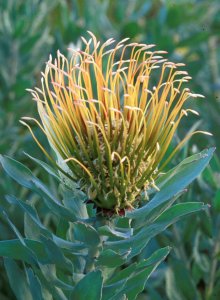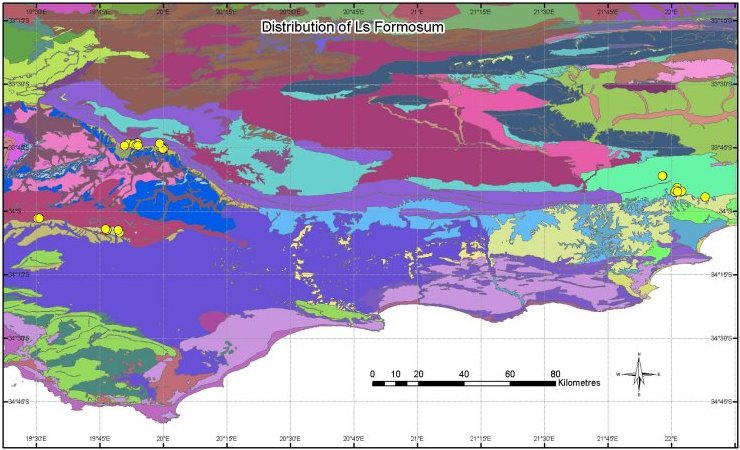
Home
Mission
Overview of Project
Project Staff
Sponsors
Achievements
Checking, Illustrations
Upcoming Activities
Id and Species Lists
Protea Information
Protea Gallery
Growing Proteas
Interim Dist. Maps
Publications
Afrikaanse Inligting
![]()
Ls formosum Distribution Explained

 Most proteas can be
easily circumscribed as to what makes them occur where they do. Geology, rainfall, sister
species and a few choice variables usually adequately describe why a species occurs where
it does. Often these patterns break down at some scale, but at the regional scale
biologists are often good at determining a species’ habitat requirements. However,
some proteas have inexplicable distributions.
Most proteas can be
easily circumscribed as to what makes them occur where they do. Geology, rainfall, sister
species and a few choice variables usually adequately describe why a species occurs where
it does. Often these patterns break down at some scale, but at the regional scale
biologists are often good at determining a species’ habitat requirements. However,
some proteas have inexplicable distributions.
The Fireworks Pincushion Ls formosum is one such species. In John’s monograph on Pincushions he noted that they occurred on south-facing slopes between 200 and 1000 m, without a mention of the large gaps between populations. These gaps were made more enigmatic when atlassers discovered a population on the Riviersonderend Mountains as well.
While we were mapping the new Fynbos Biome vegetation map we cursed when we discovered that we had to create two new types of Fynbos – "Granite Fynbos" at Dassieshoek and Riviersonderend. The next block of Granite Fynbos is from Robinson Pass to George. This is the distribution of Ls form! However, finer detail reveals that this is not adequate. Some new populations of Ls form have been atlassed on Shale Fynbos adjacent the granite. But all the populations are on the really moist Shale and Granite Fynbos on the Langeberg-Riviersonderend and Outeniqua ranges.
Tony Rebelo
Leucospermum formosum has been recorded where the yellow dots appear
Back PAN 54
